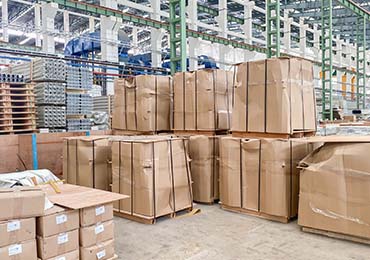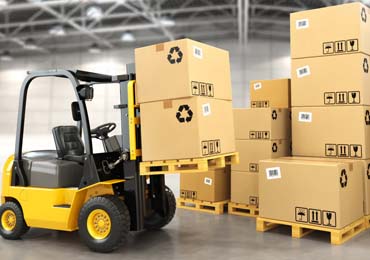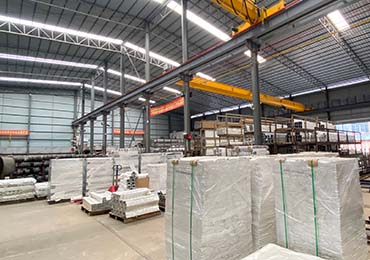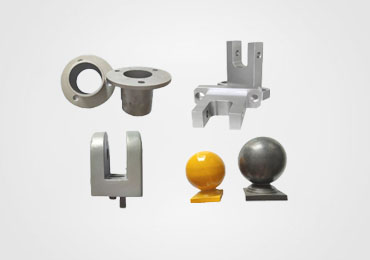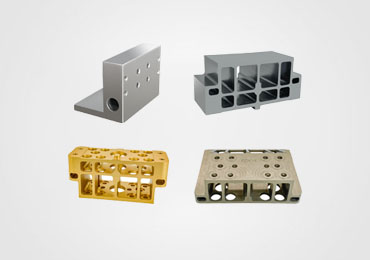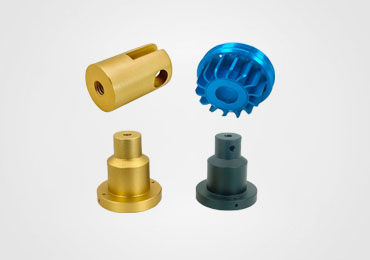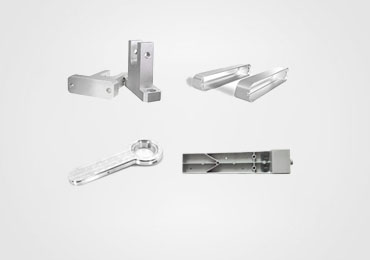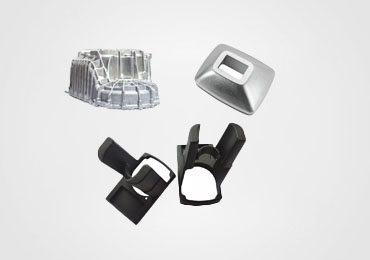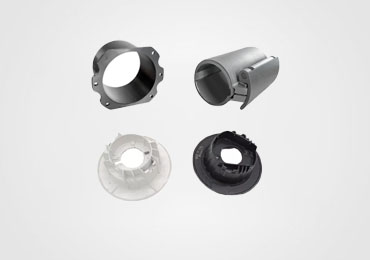- One-stop Design & Manufacturing Solutions
- High-end precision manufacturing technology
- Exclusive custom manufacturing
- Factory direct sales save your cost




Custom Industrial Aluminum Die Casting Company
Our factory has 15 years of experience in producing aluminum die-casting, and has a highly skilled and high-quality technology team to serve customers. We have multiple production lines such as casting rods, homogenization, profile extrusion, industrial profiles, and are equipped with modern testing equipment such as direct reading spectrometers, hardness testers, oxide film thickness testers, and brightness testers. The equipment is novel and complete, the production design process is exquisite, and precise management methods are used for operation.
1. One-stop Design & Manufacturing Solutions
2. High-end precision manufacturing technology
3. Exclusive custom manufacturing
4. Factory direct sales save your cost
Your Preferred Industrial Aluminum Die Casting Company and Supplier
We focus on industrial die casting custom service for 15 years, with high precision quality level, with a team of 20 engineers and 15 sales. A professional team designs drawings, selects materials, and formulates production processes, which can meet your arbitrary customized specifications and shapes, and can be mass-produced.
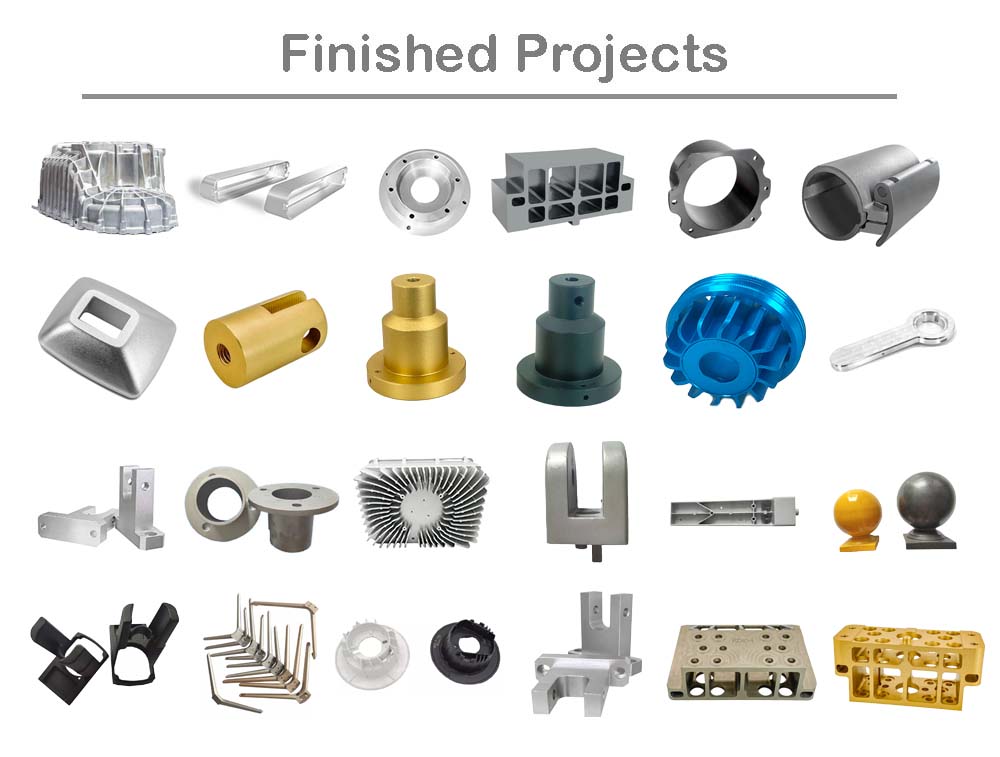
| Item Type | Industrial Die Casting |
| Material | Aluminum, plastic, customizable |
| Size | Customized size |
| Colors | Silver , black, blue, customizable colors |
| Shape | Customized |
| Thickness | Customized |
| Application | Led light housing & Led Heat sink,Auto & motocyle & bicycle parts,Furniture accessories,Power tool housing,Pump housing,Mechanical parts |
| Production Process | Customized |
| Finish | Anodizing, mill finish, electroplating, polishing, Sandblasted, Powder coating, Silver plating, Brushed, Painted, customized |
| Deep process | Bending,decoiling,welding,punching,cutting, broaching, drilling, etching/chemical processing, laser processing, milling, other processing services, rapid prototyping, turning, wire cutting |
| Tolerance | ±1% |
| Length | Customized length |
| MOQ | Low MOQ |
| Packaging | Standard export packaging or as discussed |
| OEM & ODM | Available. our engineer can check and discuss your design |
| Free Samples | Yes, we can provide free sample |
| Delivery time | 15-21 days after sample confirmed & down payment, or negotiated |
| Port | As discussed |
Contact our sales engineer for searching the request size for you.
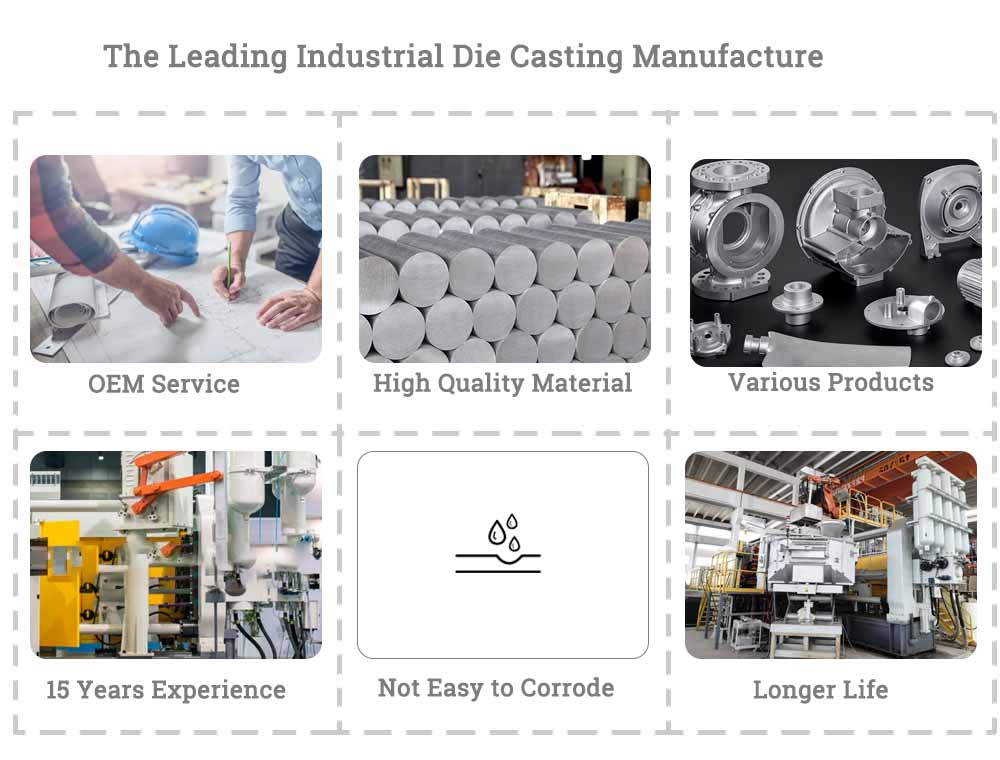

Die cast aluminum has high precision, good fluidity and formability, precise organization, high strength and hardness, high material utilization rate, good economic benefits, good conductivity and
thermal conductivity, good mechanical cutting performance, and is also very suitable for mass production.
- Package
Products You May Looking for
AL: Your Leading Industrial Die Casting Supplier
Aluminum alloy die-casting products are mainly used in industries such as electronics, automobiles, motors, home appliances, and some communication industries. Some high-performance, high-precision, and high toughness high-quality aluminum alloy products are also used in industries with high requirements such as large aircraft and ships. The main use is still in the parts of some instruments.
Industrial Die Casting- Ultimate FAQ Guide
The process flow of aluminum alloy die-casting mainly includes steps such as mold design, aluminum alloy melting, injection molding, cooling solidification, demolding, trimming, and surface treatment. Now let's have a detailed understanding of the relevant knowledge of aluminum die-casting:
Electronics
Automobiles
Motors
Home appliances
What is die-casting aluminum?
Casting is a process of metal smelting and processing, usually using the gravity of the metal to cast in the mold. But 'aluminum die-casting' is not done by gravity, but by applying a certain amount of pressure. It's a bit like 'injection molding'. But it has a set of high-tech core pulling, cooling and other systems. Overall, the material is delivered to the mold cavity to be cast through a centralized "injection" inlet, forming the part.
What are the process characteristics of die-casting aluminum?
High pressure and high-speed filling die cast aluminum molds are two major characteristics of die cast aluminum. Its commonly used injection pressure ratio ranges from thousands to tens of
thousands of kPa, and even up to 2 × 105kPa. The filling speed is about 10-50m/s, and sometimes it can even reach over 100m/s. The filling time is very short, usually within the range of 0.01 to
0.2 seconds.
advantage
1. Good product quality: The dimensional accuracy of castings is high, generally equivalent to levels 6-7, and even up to level 4; Good surface finish, generally equivalent to 5-8 grades;
The strength and hardness are relatively high, and the strength is generally increased by 25-30% compared to sand casting, but the elongation is reduced by about 70%; Stable size and good
interchangeability; Die-casting aluminum thin-walled complex castings. For example, the current minimum wall thickness of zinc alloy die-casting aluminum parts can reach 0.3mm; Aluminum
alloy castings can reach 0.5mm; The minimum casting aperture is 0.7mm; The minimum pitch is 0.75mm.
2. High production efficiency: High machine productivity, such as the domestic J-III3 horizontal cold air die-casting aluminum machine, which can die-cast aluminum 600-700 times per eight
hours on average, and the small hot chamber die-casting aluminum machine, which can die-cast aluminum 3000-7000 times per eight hours on average; Die-casting aluminum molds have a long
lifespan, with a pair of die-casting aluminum molds and die-casting aluminum bell alloys, the lifespan can reach several hundred thousand times, or even millions of times; Easy to achieve
mechanization and automation.
3. Excellent economic effect: Due to the advantages of precise size and smooth surface of die-casting aluminum parts. Generally, it is used directly without mechanical processing, or the processing
volume is small, which not only improves the metal utilization rate but also reduces a large number of processing equipment and working hours; The casting price is cheap; Combination die-casting
aluminum can be used with other metal or non-metallic materials. It saves both assembly time and metal.
Shortcoming
1. When using die-casting aluminum, due to the high speed of liquid metal filling the mold cavity and unstable flow state, the general die-casting aluminum method is used.
The casting is prone to gas pores and cannot undergo heat treatment;
2. For castings with complex concave surfaces, die-casting aluminum is more difficult
3. High melting point alloy (such as copper and Ferrous), low life of die cast aluminum mold;
4. It is not suitable for small-scale production, mainly due to the high manufacturing cost of die-casting aluminum molds, high production efficiency of die-casting aluminum machines, and
uneconomical small-scale production.
The Process Flow of Aluminum Die Casting
1. Mold design is a key link in aluminum alloy die-casting, which directly affects the quality and cost of the product. Mold design needs to consider factors such as product shape, size,
wall thickness, structure, as well as physical properties such as fluidity and shrinkage of aluminum alloy. After the mold design is completed, mold manufacturing and debugging are required.
2. Aluminum alloy melting. The aluminum alloy material used in aluminum alloy die casting is usually aluminum alloy ingots with special formulas, which require melting and insulation treatment.
During the melting process, it is necessary to control parameters such as furnace temperature, aluminum alloy composition, and gas content to ensure the quality and stability of aluminum alloys.
3. Injection molding
Injection molding is the core process of aluminum alloy die-casting, which requires the use of a die-casting machine to inject molten aluminum alloy into the mold. Injection molding requires
controlling parameters such as injection speed, pressure, and temperature to ensure the integrity and uniformity of the aluminum alloy filling mold.
After cooling and solidification injection molding, the mold needs to be placed in cooling water for cooling and solidification. The cooling time needs to be adjusted based on factors
such as product size and wall thickness to ensure product quality and stability.
After demolding, cooling and solidification, it is necessary to open the mold and remove the aluminum alloy product from the mold. Demolding requires attention to the surface
quality of the product and the maintenance of the mold to ensure quality and stability for the next use.
6. Finishing and surface treatment
After demolding aluminum alloy products, it is necessary to carry out trimming and surface treatment. Trimming includes processes such as removing burrs, cutting excess materials,
and polishing to ensure the size and appearance quality of the product. Surface treatment includes painting, electroplating, anodizing, and other processes to improve the corrosion resistance
and aesthetics of the product.
Application Fields of Aluminum Die Casting
Aluminum alloy die-casting is widely used in fields such as automobiles, aviation, electronics, and machinery. In the automotive field, aluminum alloy die-casting can be used to manufacture
components such as engine cylinder heads, crankcases, suspension systems, etc., in order to improve the lightweight and fuel economy of automobiles.
In the aviation industry, aluminum alloy die-casting can be used to manufacture aircraft engine casings, wings, and other components to improve the performance and safety of aircraft.
In the electronic field, aluminum alloy die-casting can be used to manufacture Mobile phone case, computer radiator and other components to improve the beauty and heat dissipation
performance of products.
In the field of machinery, aluminum alloy die-casting can be used to manufacture components such as toolboxes and machine casings to improve product durability and aesthetics.
Aluminum alloy die-casting is an efficient and precise casting process with broad application prospects and market demand. With the continuous progress of technology and technological
innovation, aluminum alloy die-casting will be applied and developed in more fields.
What equipment does die-casting aluminum require?
With the continuous development and progress of modern technology, die-casting equipment is playing an increasingly important role in industrial production. Aluminum alloy products are
increasingly popular among consumers, and aluminum alloy die-casting equipment is one of the important tools for producing these products.
There are many types of die-casting equipment in the market, and there are differences in the selection of die-casting equipment for different raw materials, scales, and parts requirements.
When selecting a die-casting factory, the purchaser also needs to analyze the actual situation and choose the most suitable method for themselves.
Die casting equipment can be divided into the following categories based on different metal materials and process requirements:
1. Cold Chamber Die Casting Machine: A cold chamber die casting machine is a process in which a certain amount of molten metal is poured into an unheated closed injection chamber (cold chamber),
and then a piston is used to press the metal solution into the mold, which is cooled and solidified under a certain pressure to form the final part or product.
Compared to hot chamber die-casting machines, cold chamber die-casting machines are suitable for casting high melting point alloys such as aluminum, magnesium, copper, etc., as these
materials have a high melting point and cannot remain liquid at room temperature. Cold chamber die-casting machines typically include components such as injection systems, mold locking
systems, and electrical control systems.
2. Hot chamber die-casting machine: suitable for die-casting low melting point non-ferrous alloy parts such as zinc and lead, and widely used in industrial departments such as automobiles,
motorcycle accessories, instruments and meters, daily hardware, and household appliances. This equipment is controlled by an industrial grade microcomputer and can set die casting process
parameters on the human-machine interface. It has the characteristics of labor-saving, time-saving, and convenient operation and maintenance.
3. Semi solid die-casting machine: Semi solid die-casting machine is a production process that involves die-casting metal alloys in a semi solid state. Compared with traditional die-casting methods,
semi-solid die-casting technology can effectively improve the mechanical properties, surface quality, and dimensional accuracy of metal parts, making it suitable for manufacturing high-strength
components with complex shapes. Its working principle is to evenly distribute the grains in the molten metal, and then control the temperature of the molten metal when it transitions to a semi
solid state. The metal is pressed into the mold using a die-casting machine and processed to obtain the desired product or part. Semi solid die-casting machines generally include important
components such as injection systems, mold locking systems, and electronic control systems.
The above are commonly used types of die-casting equipment, and different die-casting machines are suitable for different workpieces and materials. Choosing the appropriate die-casting equipment
plays a crucial role in improving product quality and production efficiency.
In addition, there are different classification methods such as vertical die-casting machines and horizontal die-casting machines.
Vertical die-casting machine is a die-casting equipment that adopts a vertical structure. Its working method is to inject molten metal into the die-casting chamber from above, and then remove the
parts from below after die-casting molding. The vertical die-casting machine has the characteristics of compact structure and convenient operation.
The horizontal die-casting machine is opposite to the vertical die-casting machine in that it operates in a horizontal position. Horizontal die-casting machines have the characteristics of high
production capacity and high degree of automation, and are also widely used in the production of components in fields such as furniture, home appliances, electronics, aerospace, etc.







